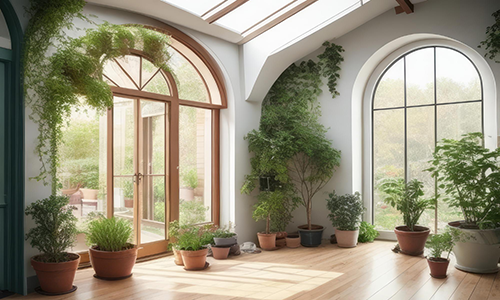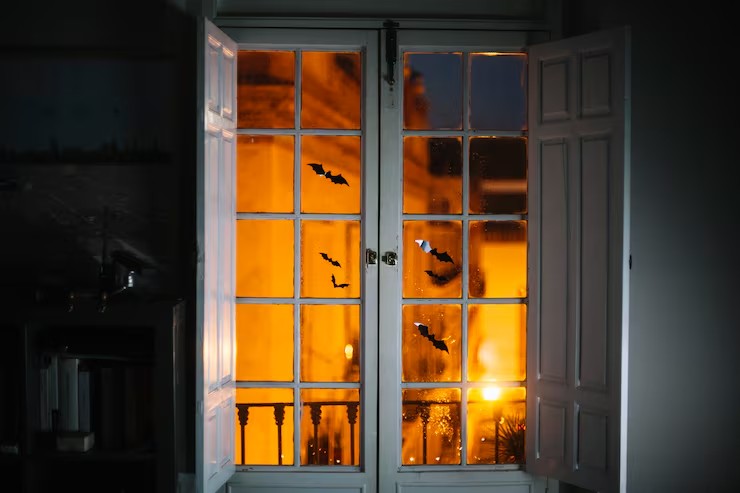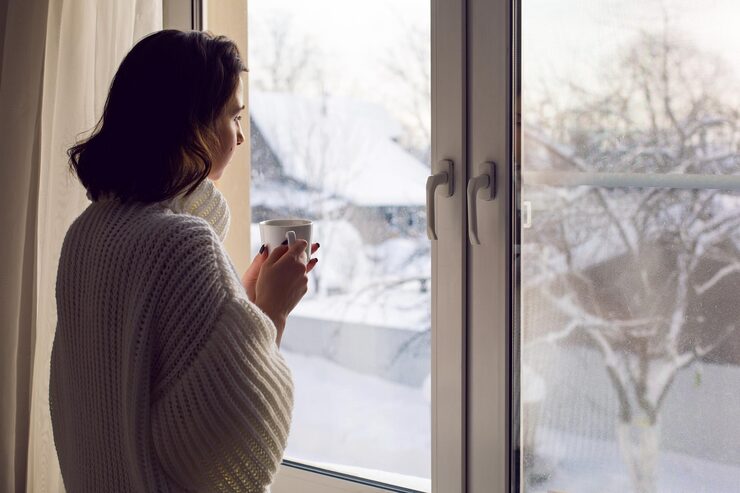
Energy-Efficient Windows: Revolutionizing Sustainability in Buildings
In today’s world, where energy conservation and environmental sustainability are paramount, the design and construction industry is constantly seeking innovative solutions to reduce energy consumption. One such area of focus is energy-efficient windows. With advancements in technology, window manufacturers have developed various types of windows that provide superior insulation, minimize heat transfer, and offer significant energy savings. In this blog, we will delve into the world of energy-efficient windows and explore widely adopted options like double-glazed windows, low-emissivity (low-e) coatings, and gas-filled windows.
1. Double-Glazed Windows
Double-glazed windows, also known as insulated glass units (IGUs), have gained immense popularity in recent years due to their remarkable energy efficiency. These windows consist of two panes of glass separated by a spacer filled with air or an insulating gas, such as argon or krypton. The trapped layer of air or gas acts as an additional barrier, hindering the transfer of heat between the interior and exterior spaces.
The benefits of double-glazed windows are twofold. Firstly, they improve thermal insulation by reducing heat loss during colder months and minimizing heat gain in warmer seasons. As a result, indoor comfort is enhanced, and energy bills are significantly reduced. Secondly, these windows offer excellent soundproofing properties by dampening external noise, creating a tranquil living environment.
As mentioned above, Double-glazed windows offer numerous benefits. However, they also come with a few challenges that are worth considering:
1. Cost:
Double-glazed windows can be more expensive to install compared to single-pane windows. The higher cost is primarily due to the additional materials and expertise required for installation.
2. Condensation:
In some cases, condensation may occur between the two panes of glass in double-glazed windows. This can happen if the seal between the panes fails or if there is a significant difference in temperature and humidity between the indoor and outdoor environments. Condensation can obscure visibility and lead to mold growth if not addressed promptly.
3. Maintenance and repair:
Double-glazed windows require regular maintenance to ensure optimal performance. If the seals on the window fail, it may result in a loss of insulation and allow moisture to enter. Repairing or replacing a damaged double-glazed window can be more complex and costly compared to single-pane windows.
4. Weight and installation:
Double-glazed windows are heavier than single-pane windows due to the extra glass pane and gas-filled space in between. The increased weight can make installation more challenging, especially for larger window sizes. Proper installation is crucial to maintaining the structural integrity and performance of double-glazed windows.
5. Retrofitting limitations:
Retrofitting existing homes with double-glazed windows can be more complicated compared to new constructions. Structural modifications may be necessary, and the existing window frames may need to be replaced or modified to accommodate the double-glazed units.
Despite these challenges, It’s important to consult with professionals and choose high-quality windows to minimize these potential issues and maximize the benefits of double-glazing.
2. Low-Emissivity (Low-E) Coatings
Low-emissivity (low-e) coatings are thin metallic layers applied to the surface of window glass. These coatings are designed to reflect infrared radiation while allowing visible light to transmit through the glass. By reflecting a significant portion of radiant heat, low-e coatings help maintain a favorable indoor temperature.
Low-e coatings are available in different variations, such as hard-coat and soft-coat. Hard-coat low-e coatings are more durable and typically used in single-glazed windows or as the outer pane of double-glazed units. In contrast, soft-coat low-e coatings offer enhanced energy efficiency and are commonly used in the inner pane of double-glazed windows.
These coatings significantly reduce heat transfer by reflecting it into the room, resulting in reduced reliance on heating and cooling systems. Moreover, low-e coatings prevent ultraviolet (UV) radiation from entering the building, which helps protect furniture, flooring, and artwork from fading due to sun exposure.
Low-emissive coatings, While they offer several benefits, there are a few potential problems associated with low-emissive coatings:
1. Cost:
Low-E coatings are generally more expensive than regular glass or coating options. The manufacturing process and high-tech materials required for these coatings contribute to their higher cost. This can make them less accessible for budget-conscious consumers or projects with limited funds.
2. Durability:
Some low-E coatings may be susceptible to damage over time. Factors such as exposure to harsh weather conditions, cleaning agents, or improper handling during installation can affect their effectiveness and longevity. Scratches, chemical deterioration, or degradation of the coating can compromise its thermal properties.
3. Visible Light Transmission:
While low-E coatings are designed to reduce heat transfer, they can also impact the amount of visible light transmitted through windows. Depending on the specific coating used, there may be a slight reduction in the clarity or brightness of the view. This can be a concern for individuals who prefer abundant natural light indoors.
4. Angle Dependency:
Low-E coatings can exhibit angle dependency, meaning that their performance may vary depending on the angle of incidence of sunlight. In some cases, the efficiency of the coating in reflecting heat may decrease at certain angles, leading to potential hot spots or inconsistent temperature control.
5. Compatibility with Window Frames:
Certain low-E coatings may require specific window frame materials or construction methods for optimal performance. In retrofit situations or when replacing existing windows, compatibility with the frames and installation requirements should be carefully considered to ensure proper functionality.
It’s important to note that advancements in technology continue to address many of these issues, and not all low-E coatings will face the same problems. Manufacturers are investing in research and development to improve the durability, efficiency, and overall performance of low-emissive coatings.
3. Gas-Filled Windows
Gas-filled windows involve insulating gases, such as argon or krypton, between the glass panes of a window. These heavier-than-air gases provide superior thermal insulation compared to regular air, reducing heat transfer and improving overall energy efficiency.
Argon gas is commonly used in gas-filled windows due to its affordability and effectiveness as an insulator. Krypton gas, though more expensive, offers even better insulation properties, making it suitable for applications where space is limited, such as in triple-glazed windows.
Gas-filled windows work in synergy with other energy-efficient features like low-e coatings and double glazing. The combination of multiple layers, low-e coatings, and insulating gas creates a highly efficient barrier against heat loss or gain, resulting in significant energy savings.
Gas-filled windows offer numerous advantages in terms of energy efficiency and comfort. However, they also come with a few challenges. Here are some of the challenges associated with gas-filled windows:
1. Seal Failure:
Gas-filled windows rely on airtight seals to trap the insulating gas between the panes of glass. Over time, these seals can deteriorate or develop leaks, which allows the gas to escape and compromises the window’s performance. When the insulating gas is lost, the window loses its energy efficiency benefits.
2. Condensation:
If the seal on a gas-filled window fails, it can lead to condensation forming between the panes of glass. This condensation not only obstructs the view but also indicates that the insulating gas has escaped, reducing the window’s energy efficiency.
3. Manufacturing and Installation Costs:
Gad-filled windows require specialized manufacturing processes and often involve higher production costs than regular windows. Additionally, their installation may require trained professionals due to their specific requirements, increasing the overall cost.
4. Limited Repair Options:
Unlike single-pane windows, repairing failed gas-filled windows can be challenging. In most cases, the entire IGU needs to be replaced rather than just fixing the failed seal. This replacement process can be expensive and time-consuming.
5. Environmental Impact:
Some insulating gases used in gas-filled windows, such as chlorofluorocarbons (CFCs) or hydrochlorofluorocarbons (HCFCs), have been found to have adverse effects on the environment, contributing to ozone depletion or climate change. However, many modern gas-filled windows now use more environmentally friendly gases, such as argon or krypton, which mitigate this concern.
Despite these challenges, gas-filled windows remain popular due to their energy-saving properties and improved comfort. Regular maintenance, proper installation, and choosing high-quality products minimize these challenges and ensure optimal performance.
Soilwin
Current building windows’ weight is high, their installation process is complex, their heat and sound insulation depends on their multi-layer construction and high costs, the heat insulation of these windows depends on high prices and sealing, and most of the materials used are not eco-friendly. And also, the firing problem is one of the primary concerns in building windows in Canada. This window uses a three-dimensional block and two-stage gypsum formwork method for producing hollow ceramic blocks.
In this product, with a unique formulation used, the window becomes soundproof using argon gas and trapped air; it becomes Heat insulation. This block is made modularly in different shapes and designs and can be turned into double-glazed window blocks by adding white or colored double-glazing in the center. This product can also be used as a prefabrication wall for building facades, which is more complex and stable than any natural stone – even granite. The use of hollow ceramics in the facade of the building is lighter than other similar facades, which will reduce the weight of the walls and the forces entering the building.
What is the innovative point of soil win?
- The chemical structure insulates ceramics from impact, sound, and heat.
- They are injecting argon gas and keep it inside three-dimensional ceramics for thermal and acoustic insulation.
- Use a layer of glaze on the block and provide a two-stage baking cycle.
- The lightness of this structure is due to the high thickness and strength of the materials
Overall, the innovative features of Soilwin windows lie in their comprehensive insulation capabilities, argon gas use, double glazing option, durable two-stage baking cycle, and lightweight yet strong construction. These features contribute to improved energy efficiency, soundproofing, and overall performance of buildings where Soilwin windows are installed.
Conclusion
Energy-efficient windows have become an integral part of sustainable building design. Double-glazed windows, low-e coatings, and gas-filled windows are just a few examples of the innovative solutions available in the market today. By effectively reducing heat transfer and enhancing insulation, these windows contribute to energy conservation, improved indoor comfort, and reduced carbon footprints.
As society continues to prioritize environmental responsibility, embracing energy-efficient windows will undoubtedly play a crucial role in shaping a greener and more sustainable future.


